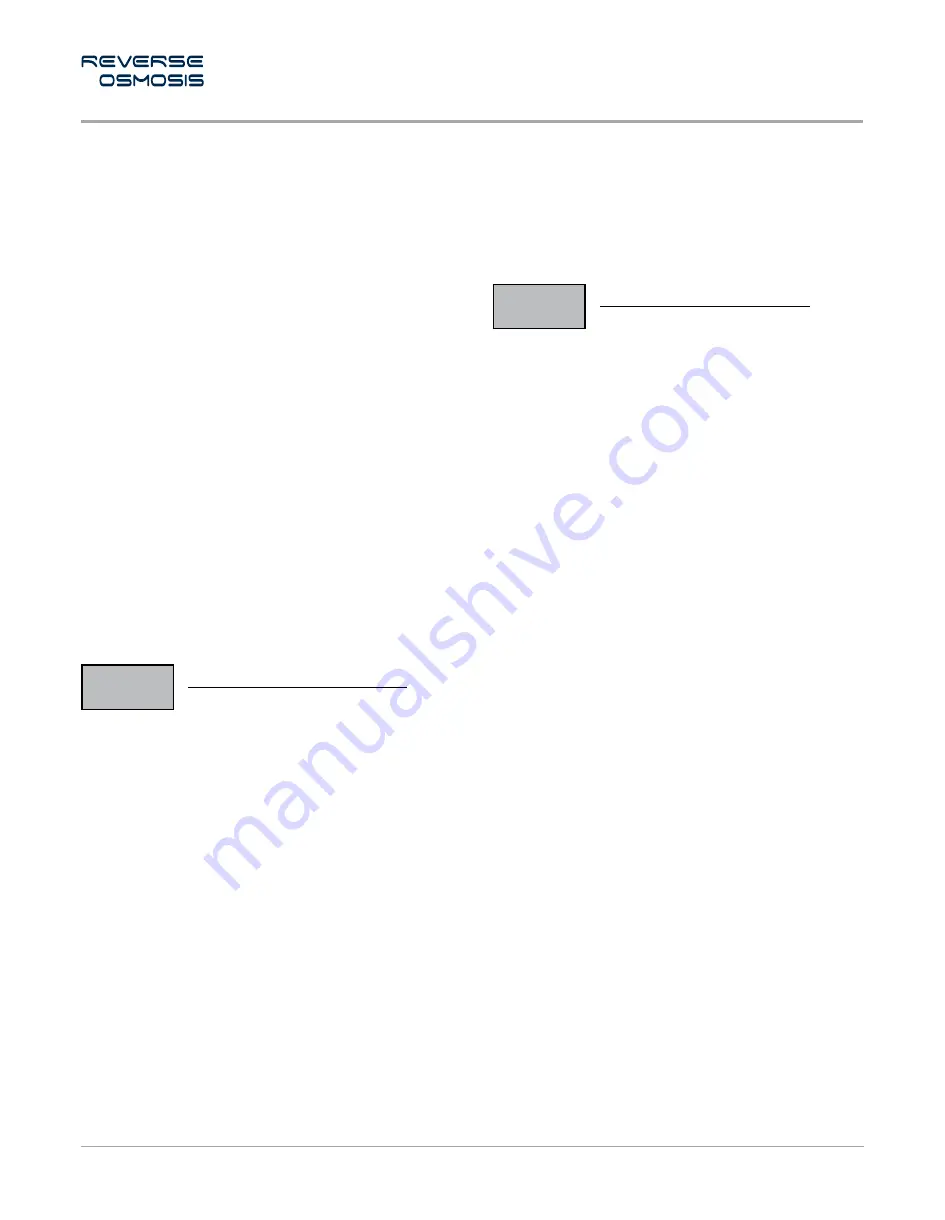
Page 5 of 12
RO-300G & RO-600G
W A T E R P U R I F I C A T I O N S Y S T E M
Reverse Osmosis Process Terminology
IV. REVERSE OSMOSIS PROCESS TERMINOLOGY
a. Water Quality:
Water quality from an RO system is normally determined with
a TDS Meter, which measures total dissolved solids in water,
measuring conductivity. The results are normally measured in
parts per million or milligrams per liter. (ppm o mg/lt) Fewer
dissolved solids results in higher quality water.
b. Rejection Ratio:
The least amount of TDS means a higher water quality.
Osmosis membranes are classified by the amount of total
dissolved solids (minerals) refuse and are expressed as a
percentage of rejection.
For example:
If feed water contains 100 ppm of dissolved solids and the
product water after the membrane has 10 ppm of dissolved
solids the rejection rate is 90%.
Formula:
Percent
Rejection
=
(Feed H2O TDS - Product H
2
O TDS)
x 100
Feed H
2
O TDS
NOTE : All TDS data must be expressed in the same units, typically parts per
million (PPM) or milligrams per liter (mg / L).
c. Water Production Available:
Each system is designed with an especific flow rate acording to
the size of the membrane(s) and it will be referencing the water
production flow capable to produce.
This capacity is indicated as gallons per day in consideration of
24 hrs of operation.
The flow of water flowing into the drain is called wastewater and is
measured in Gal/Day.
The feedwater flow is the sum of currents product water
and waste water.
d. Percent Recovery:
It is another way to measure the amount of water
produced compared to the amount of water used.
Formula:
Percent
Recovery
=
Product H
2
O Rate
x 100
Feed H
2
O Rate
e. Water Pressure and Temperature:
Product water quality and production of RO systems is dependent
on pressure and temperature. Typically, RO membranes are treated
at standard conditions of 77 °F (25 °C) y a 100 PSI.
In general, the higher the pressure differential and temperature,
the greater the quality and quantity of water produced.
These factors should be considered when sizing RO systems
for a particular application.
f. Permeate Flow (variable)
Permeate flow should be within 20% of the rated production,
after correcting the feedwater temperatures above or
below 77 ° F.
For example:
5 gpm @ 59˚ F (5÷1.42=3.52 gpm)
5 gpm @ 77˚ F (5÷1=5 gpm)
5 gpm @ 84˚ F (5÷0.89=5.62 gpm)
g. Request for Technical Assistance
If service assistance is required, please complete
the following process.
Contact your local dealer or distributor. Prior to making the call,
have the following information available:
System installation date, series number, daily log sheets, current
operating parameters (e.g. flow, operating pressures, pH, etc.)
and a detailed description of the problem.
RO-300G-600G_manual.indd 5
6/28/16 3:57 PM






























